Germany is leading the charge to create the world’s most innovative supercar
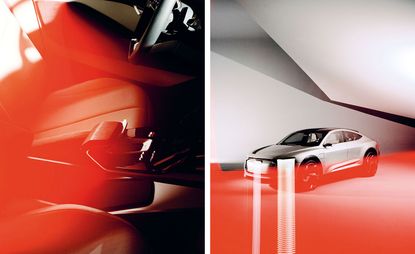
From hybrid supercars to hi-tech campervans, Germany is pushing auto innovation into top gear. Think AI dashboards, pure electric ideals and cult concept hits. Here’s all you need to know about the very best in German motor manufacturing and design in 2018...
BMW i8 Roadster

When the BMW i8 Coupé debuted in 2014, it was like nothing else on the road. The flag bearer for the Munich manufacturer’s drive to electric propulsion, the sporting four-seater was a grand tourer with bold style and a minimal environmental footprint. Now the line-up is joined by the i8 Roadster, which retains the Coupé’s dihedral doors and replaces the rear seats with a quick-folding electric soft-top, while new battery tech increases the all-electric range. BMW now has a total of nine electrified vehicles, with an all-electric Mini waiting in the wings for 2019. Next up is the BMW iNext, a concept SUV that points the way to a pure electric future; by 2025, the company hopes to over 25 electrified cars, 12 of which will be fully electric.
BMW i8 Roadster, from £124,000, bmw.com. Photography: Leon Chew
VW ID Buzz Concept

Many credit Volkswagen’s original Type 2 as the car that shaped the company’s image. From 1950 onwards, the various Type 2 vans, campers and buses projected an image of friendly functionalism, industrious but also countercultural, with a design that was compact and reassuringly durable. The ID Buzz is the concept version of the vehicle that VW hopes will recapture those glory days. Come 2022, the all-electric descendant of this pure concept car will be silently gliding along the boulevards of the future. With seating for eight, a projected 250-mile range and more clever design touches than you’d find in three regular-sized cars, the Buzz promises to replicate its forebears’ cleverest trick and become a cult hit that’s also a commercial success.
Volkswagen ID Buzz, concept only, volkswagen.com. Photography: Leon Chew
Porsche Panamera Turbo S E-Hybrid

If there’s a more complete supercar on the market, we’ve yet to find it. Serving as our photographer’s trusty steed for the epic road trip behind this story, the new Turbo S E-Hybrid version of the Panamera combines space with pace, and pure dynamics with a veritable deluge of technology. Under its sleek bodywork is a turbocharged V8 mated to an electric motor and a hefty chunk of batteries. The result is a car that can glide silently and emission-free in EV mode, but still tear it up on the Autobahn, with a scarcely credible 3.4 second sprint time, thanks to instant electric torque. The finely detailed interior is perhaps the gold standard of what a tech-centric luxury sports car should look like inside. This is the ultimate hybrid machine and Porsche’s own all-electric saloon arrives next year.
Panamera Turbo S E-Hybrid, from £137,140, porsche.com. Photography: Leon Chew
Mercedes-Benz CLS

The CLS-Class has been led by design since the first swoopy saloon was launched back in 2005. Now on its third generation, it’s still the machine of choice for those who want a sober saloon with a subtle hint of class. Shown here as a 4MATIC four-wheel drive 400d in special Edition 1 trim, the CLS has the option of accommodating Mercedes-Benz’s cutting-edge driver assistance technology, widely seen as a stepping stone to the next level of autonomous driving. The top-of-the-line 450 model also incorporates EQ Boost, a new ‘mild’ hybrid system that throws in a few more electric horsepower to help with acceleration. Add in the optional Widescreen cockpit, which scatters the dashboard with panoramic display screens, and you have a classically elegant car that fuses traditional style with the building blocks for tomorrow.
Mercedes-Benz CLS, from £57,510, mercedes-benz.com. Photography: Leon Chew
As originally featured in the April 2018 issue of Wallpaper* (W*229)
Audi Elaine Concept
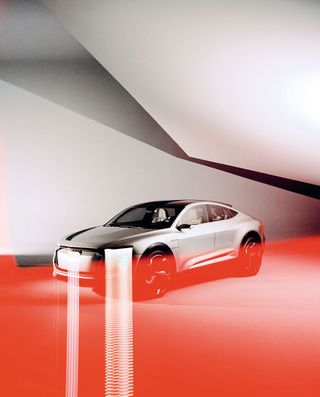
By the end of 2018, Audi will have had an image overhaul unlike any before. For decades the face of rock-solid German dependability and classically modern design, the brand is embracing an electric future with gusto. First up this autumn will be the E-tron SUV, a conventionally-styled pure electric challenger to Tesla et al. It’ll be followed by a more stylish Sportback sibling, previewed here in the shape of the Elaine Concept. That personable name is no mere placeholder; it shows the company trying to humanise its rather aloof image. The core technology is Audi AI, with autonomous functions ranging from self-driving highway mode to self-parking, charging and even washing. This is all still future thinking, but the recently launched Audi Smart Energy Network pilot project – a home charger system designed to integrate with the power grid – shows the electric road ahead.
Audi Elaine, concept only, audi.com. Photography: Leon Chew

The BMW i8 Roadster’s up-and-out doors sport frameless windows, while its fabric roof folds back in a Z-Shape in 16 seconds, some of the roof mechanism’s elements can only be created using 3D-printed technology

Managing to be both retro and futuristic, the VW ID Buzz features the type 2’s trademark two-tone paint scheme and horizontal air intakes in the D-Pillars, but also a dashboard using augmented reality and side-mirror cameras.
Wallpaper* Newsletter
Receive our daily digest of inspiration, escapism and design stories from around the world direct to your inbox
Jonathan Bell has written for Wallpaper* magazine since 1999, covering everything from architecture and transport design to books, tech and graphic design. He is now the magazine’s Transport and Technology Editor. Jonathan has written and edited 15 books, including Concept Car Design, 21st Century House, and The New Modern House. He is also the host of Wallpaper’s first podcast.
-
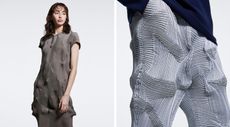 Get to know Issey Miyake’s innovative A-POC ABLE line as it arrives in the UK
Get to know Issey Miyake’s innovative A-POC ABLE line as it arrives in the UKAs A-POC ABLE Issey Miyake launches in London this week, designer Yoshiyuki Miyamae gives Wallpaper* the lowdown on the experimental Issey Miyake offshoot
By Jack Moss Published
-
 Eurovision unveils its 2024 stage, designed by Beyoncé's Renaissance Tour creatives
Eurovision unveils its 2024 stage, designed by Beyoncé's Renaissance Tour creativesThis year's stage design aims to bring the audience into the performance more than ever before.
By Charlotte Gunn Published
-
 Ikea meets Japan in this new pattern-filled collection
Ikea meets Japan in this new pattern-filled collectionNew Ikea Sötrönn collection by Japanese artist Hiroko Takahashi brings Japan and Scandinavia together in a pattern-filled, joyful range for the home
By Rosa Bertoli Published
-
 Coming soon: a curated collection of all the new EVs and hybrids that matter
Coming soon: a curated collection of all the new EVs and hybrids that matterWe've rounded up new and updated offerings from Audi, Porsche, Ineos, Mini and more to keep tabs on the shifting sands of the mainstream car market
By Jonathan Bell Published
-
 BMW Vision Neue Klasse X reveals the shape of tomorrow’s electric SUV
BMW Vision Neue Klasse X reveals the shape of tomorrow’s electric SUVNew concept the BMW Vision Neue Klasse X previews the next-generation ‘X’ models
By Jonathan Bell Published
-
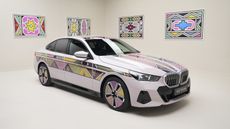 BMW i5 Flow NOSTOKANA brings Esther Mahlangu’s art to life at Frieze LA
BMW i5 Flow NOSTOKANA brings Esther Mahlangu’s art to life at Frieze LABMW’s Art Car Project has rarely impacted on the company’s everyday business of building cars. With the BMW i5 Flow NOSTOKANA, could all that be about to change?
By Jonathan Bell Published
-
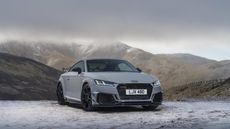 Farewell to the Audi TT, a design icon that evolved with the automotive landscape
Farewell to the Audi TT, a design icon that evolved with the automotive landscapeFor over 25 years, the Audi TT has been synonymous with the brand, a modern machine that initially favoured style over sport. The final editions are very different beasts to the original
By Jonathan Bell Published
-
 Electric BMW CE 02 is an eParkourer for the urban jungle
Electric BMW CE 02 is an eParkourer for the urban jungleThe BMW CE 02 – BMW Motorrad’s second all-electric scooter –is aimed squarely at the urban rider, offering style and power in a bold new package
By George Chapman Published
-
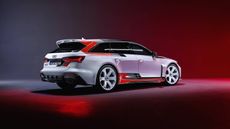 Audi RS6 Avant GT is an estate car that thinks it belongs on the track
Audi RS6 Avant GT is an estate car that thinks it belongs on the trackWith the Audi RS6 Avant GT limited-edition supercar, Audi Sport has gone all-out to create the ultimate hyper-estate
By Jonathan Bell Published
-
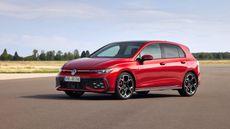 VW Golf at 50: the new model, and a look back at the pioneering small car
VW Golf at 50: the new model, and a look back at the pioneering small carA VW Golf update brings new tech, innovations and efficiencies to keep the car at the heart of the brand 50 years after its debut
By Jonathan Bell Published
-
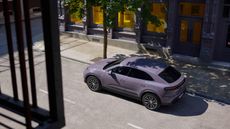 Porsche transforms the Macan into its newest all-electric model
Porsche transforms the Macan into its newest all-electric modelThe new Porsche Macan 4 and Macan Turbo are compact electric SUVs that mark a major step in the company’s transformation into a luxury EV maker
By Jonathan Bell Published